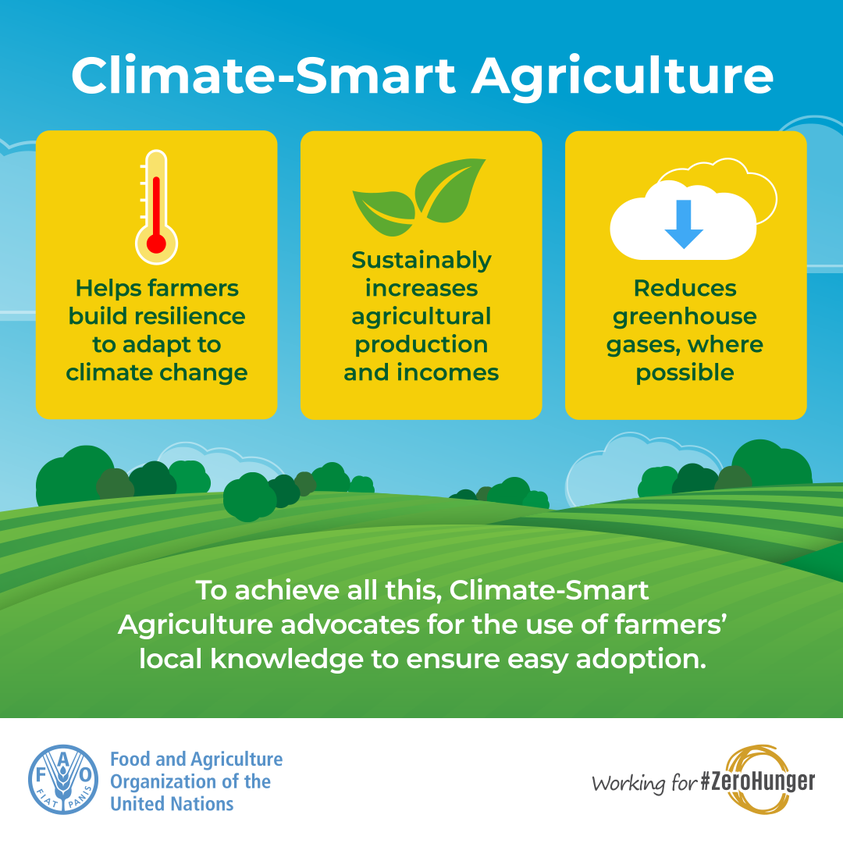Climate Smart Farming: Transform Your Landscape

Imagine transforming your farm into a thriving, eco-friendly oasis that not only yields abundant harvests but also stands resilient against the whims of climate change. Welcome to the world of climate smart farming—a revolutionary approach that blends cutting-edge technology with time-honored agricultural wisdom. But what is climate smart farming, and how can it benefit you? Let's dive in and explore how you can make your farm both more productive and sustainable.
Understanding Climate Smart Farming
So, what is climate smart farming? In essence, it's about adopting sustainable agriculture practices that improve soil health, enhance crop resilience, and promote water efficiency. Think of it as farming smarter, not harder. By integrating climate resilient crops, eco-friendly farming techniques, and water-efficient farming, you can create a farm that thrives under the ever-changing climate conditions.
Boosting Soil Health: The Foundation of Success
Soil is the lifeblood of your farm. Improving soil health means improving the overall productivity and sustainability of your land. One of the key techniques in climate smart farming is the use of cover crops. These plants, like clover or rye, protect your soil from erosion, improve its structure, and add nutrients naturally.
Another crucial practice is the adoption of no-till farming. Traditional tilling can disrupt soil structure and degrade soil health. By avoiding this practice, you can lock in moisture, reduce erosion, and foster a healthy soil ecosystem. For more detailed insights, you can refer to resources from esteemed organizations like the Food and Agriculture Organization.
Harnessing Climate Resilient Crops
The adoption of climate resilient crops is another cornerstone of climate smart farming. These crops, such as drought-resistant varieties of maize or heat-tolerant wheat, are designed to withstand extreme weather conditions. By integrating these into your farming practices, you can ensure stable yields, even in years when the climate throws a curveball.
Ever heard of the phrase "no rain, no gain"? With climate resilient crops, it's more like "rain or shine, you'll dine." Imagine having crops that flourish in drought and don't shrivel under the scorching sun. This is the power of climate-resilient crops—giving you the upper hand against unpredictable weather changes.
Water-Efficient Farming: Every Drop Counts
Water is life, and in farming, it's the lifeblood that nourishes your crops. In regions hit by drought, traditional irrigation methods can be a drain on resources. But with climate smart farming, you can adopt water-efficient farming techniques that make every drop count. Drip irrigation, for instance, delivers water directly to the plant roots, reducing waste and improving crop health.
Combine this with soil moisture sensors and weather forecasting tools, and you'll be running a lean, green irrigation machine. Picture a well-hydrated farm that thrives in both wet and dry seasons—the epitome of water efficiency.
Innovating Your Farming Practices
Eco-friendly farming techniques are another pillar of climate smart farming. Agroforestry, which integrates trees with crops, provides shade, reduces evaporation, and enhances biodiversity. It's like having a natural air conditioner and biodiversity booster all in one.
Additionally, incorporating Integrated Pest Management (IPM) helps you control pests naturally, reducing the need for harmful chemicals. Think of it as a detective's job: identify the problematic pests and use natural predators to control them. This not only keeps your farm eco-friendly but also healthy and sustainable.
Boost Your Yields and Sustainability
In today's world, practicing sustainable agriculture is not just a nice-to-have; it's a must-have. Climate smart farming offers you a blueprint to boost your yields while reducing your environmental impact. By embracing these innovative techniques, you're not just securing your farm's future but also contributing to a greener, more sustainable world.
What are you waiting for? It’s time to transform your landscape with these peculiar green strategies. Want to boost yield & sustainability What is Climate Smart Farming click to discover the best techniques & tools
Whether you're a seasoned farmer or just getting started, the journey towards sustainable agriculture begins with a single step. So, take that step today and embrace the future of eco-farming.
Conclusion
Transform your landscape with climate smart farming and experience the difference for yourself. Breaking down barriers to adopt sustainable practices is the ticket to a greener, more productive tomorrow. From improving soil health to adopting climate resilient crops and practicing water-efficient farming, every small change adds up to a big impact. So, dive into the world of climate smart farming and unlock the full potential of your land.
Frequently Asked Questions
1. How can I get started with climate smart farming?
Start by assessing your current farming practices and identifying areas for improvement. Then, integrate sustainable agriculture practices like no-till farming, cover cropping, and climate resilient crops. Also, explore water-efficient farming techniques and eco-friendly farming methods.
2. What are some of the best climate resilient crops?
Some of the best climate resilient crops include drought-resistant maize varieties, heat-tolerant wheat, and flood-resistant rice. These crops are specifically bred to withstand extreme weather conditions and ensure stable yields.
3. How does water-efficient farming benefit my farm?
Water-efficient farming techniques like drip irrigation and soil moisture sensors reduce water waste and improve crop health. This results in better yields and lower operational costs, making your farm more resilient and sustainable.
4. What are the benefits of improving soil health?
Improving soil health enhances crop productivity, reduces the need for chemical fertilizers, and promotes soil biodiversity. It also helps in water retention, reducing erosion, and making your farm more resilient to climate changes.
5. How can I integrate eco-friendly farming techniques into my practices?
Start by adopting practices like agroforestry and Integrated Pest Management (IPM). These methods reduce the reliance on harmful chemicals and promote natural pest control, leading to a healthier and more sustainable farm.
```
0 Response to " Climate Smart Farming: Transform Your Landscape"
Post a Comment